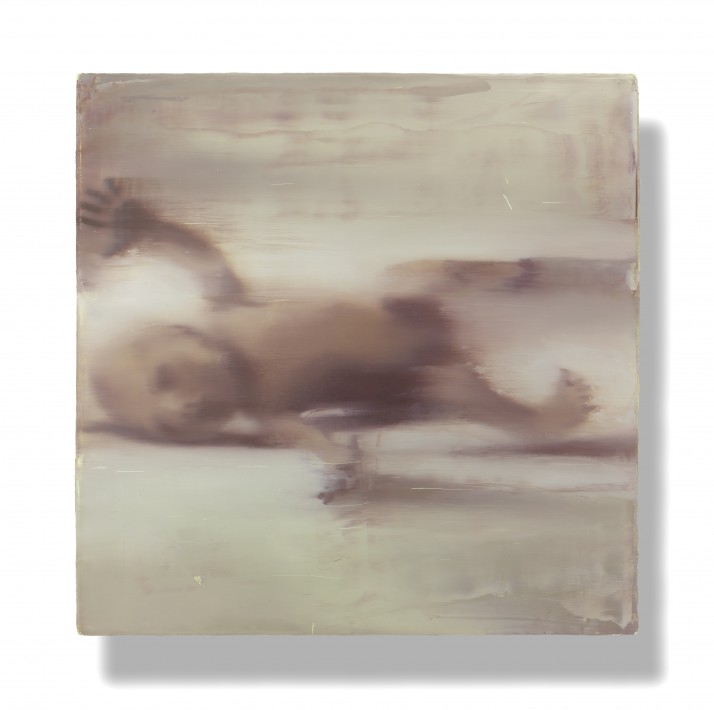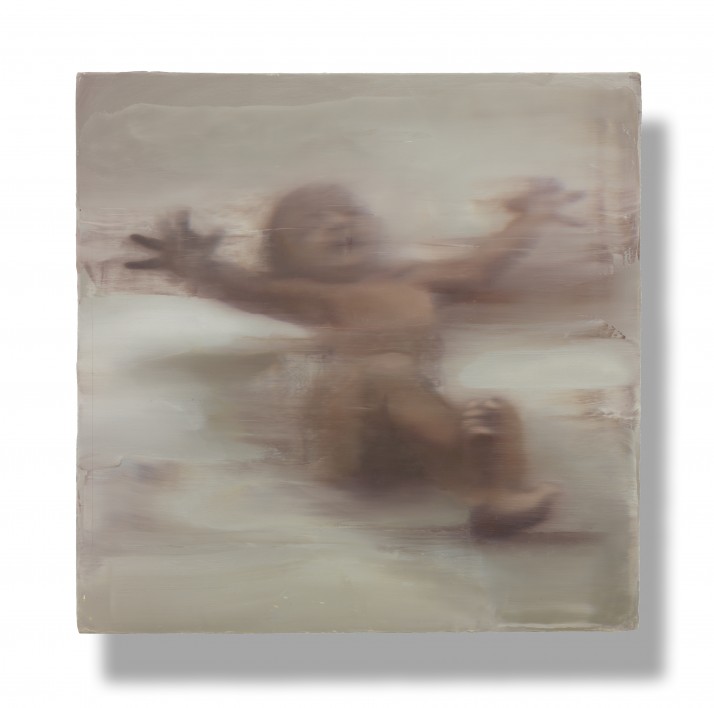As the recent debates on painting show, the dichotomy between painting and conceptual art, maintained for so long, is increasingly being revealed as a reductive construct; and in retrospective, this is also true of the art of the 1980s and 1990s. Indeed, we might think here not just of artists who are influential today, like Martin Kippenberger or Jutta Koether, but also of those painters who, for example, due to their production being cut short by sudden death, have been ascribed a status as “artists’ artists,” and who to this day receive only moderate attention.
With its oscillation between a conscious distance and engaging with procedures and effects traditionally associated with painting (including virtuosity), Ull Hohn’s (1960-1995) work seems absolutely topical today. In his work from the late 1980s and early 1990s, Hohn negotiates the relationships between body, gender/sexuality, and painterly forms of representation, between models of painting advocated by the mass media and traditional virtuosity and craftsmanship, or between paintings as historical objects and his own production of images. For example, when Hohn attaches small labels with colloquial synonyms for the adjective “gay” to incarnadine monochromes, or paints a series of landscapes after patterns from TV programmes for hobby-painters, or paints motifs from 19th century American landscapes, including the patina of yellowed reproductions, or copies his own works from his youth, he conceives of painting as a field where discourses and material practices, the history of the medium and his personal application of it converge, without however suggesting that “concept” and “painting” could or should ever be played off against each other. This is all the more remarkable in view of the fact that these works were made in a historical and theoretical context where painting was almost universally under ideological suspicion, accused of being regressive and directly commercially usable.
In its third solo exhibition devoted to Ull Hohn, Galerie Neu shows a series of five paintings from 1988 that each expose a naked newborn, without any romanticism, in front of an undefined, as it were placeless background. The blurred painting style, based on photographs, is reminiscent of some works by Gerhard Richter, whose Meisterschüler Hohn was; but Horn adds his own twist to the series by emphasizing the object-character of the works, painting on wooden boxes almost 10 centimetres deep, on which the painted image appears like a delicate film. These paintings of babies, as Manfred Hermes suggests, can also be read as a reference to “heterosocial pressures and their conservative goal of reducing sex and sexuality to human reproduction” – especially when seeing them together with another series of 1988, which Horn painted from private “pornographic” photographs of himself and his partner.
Ull Hohn
01.12.2010 – 01.01.2011


